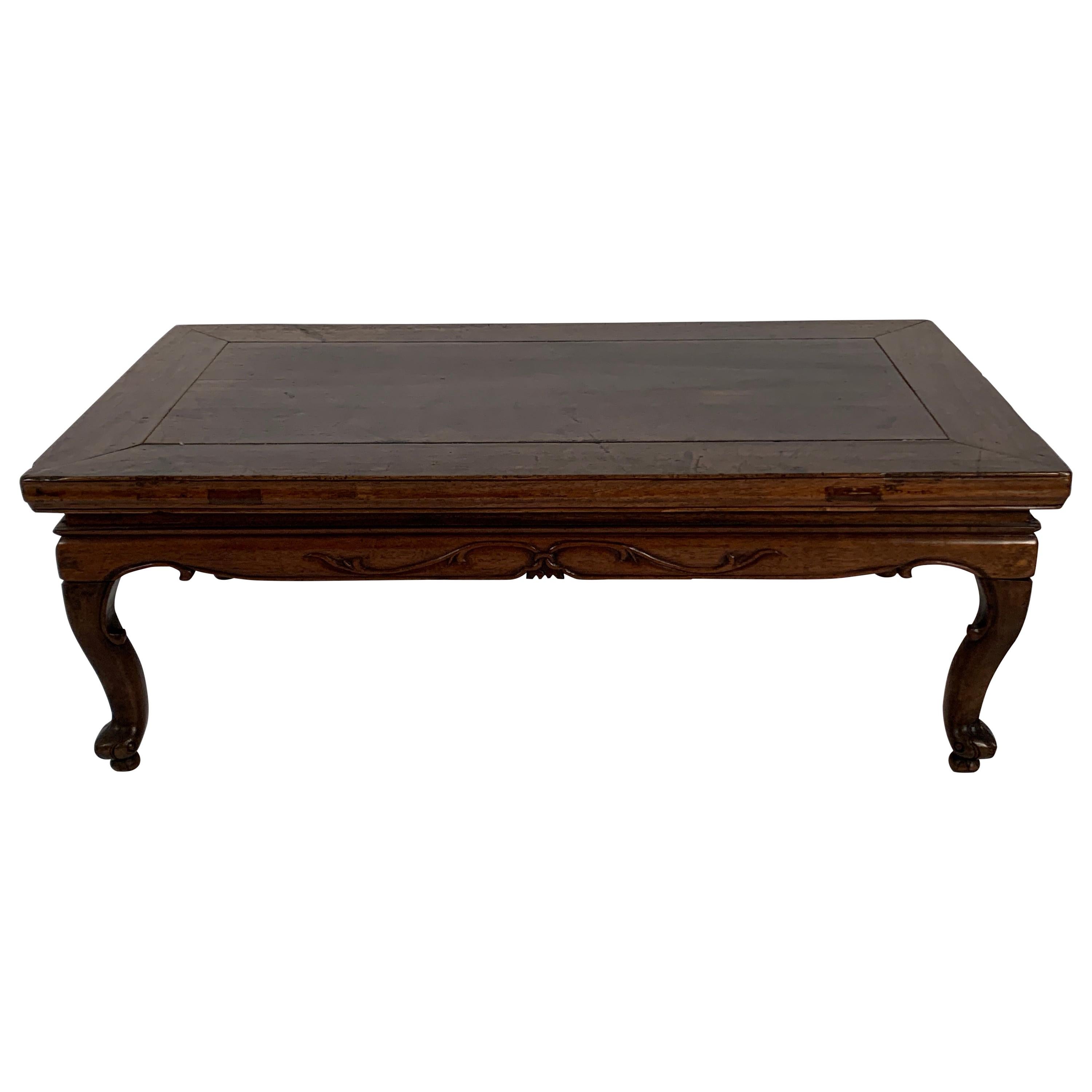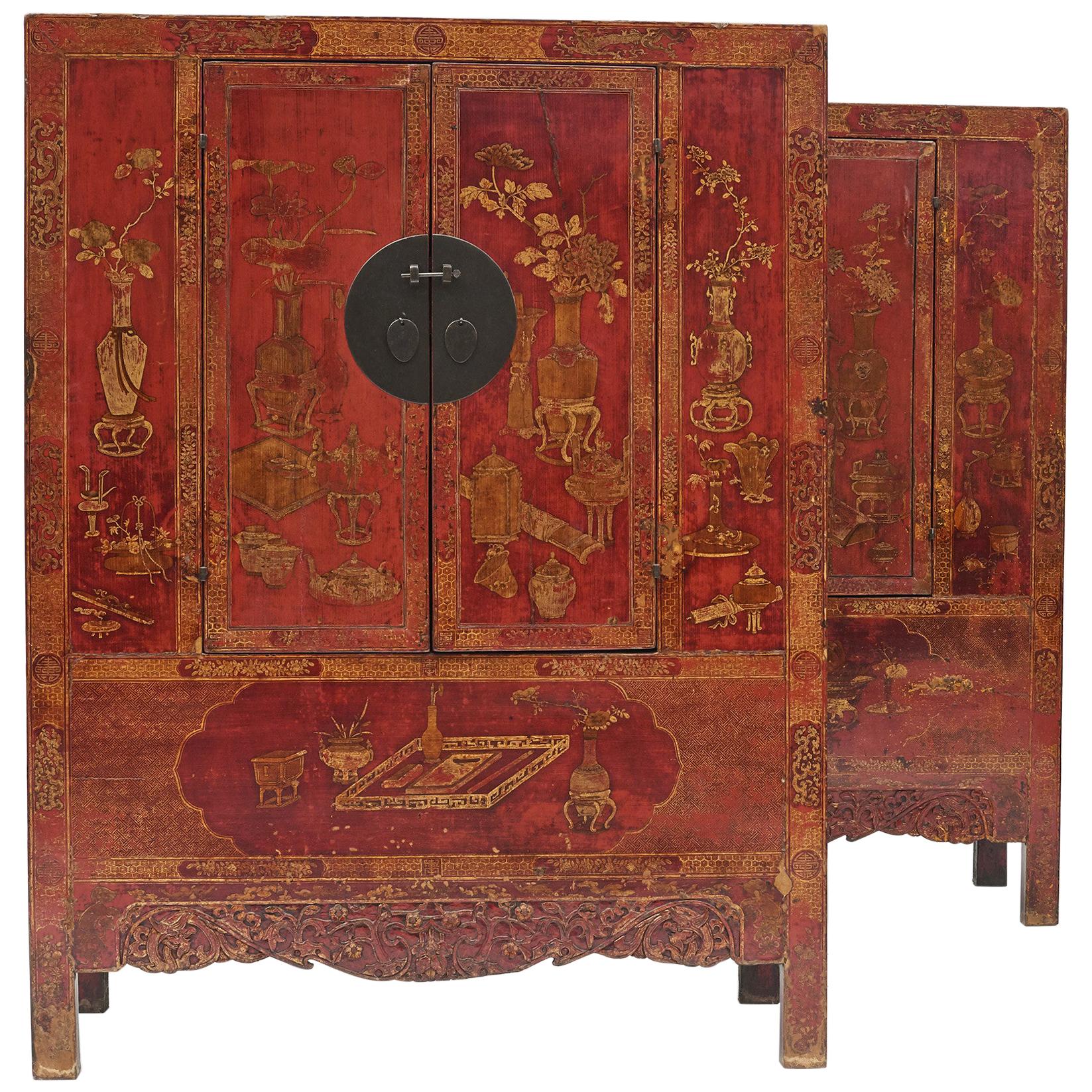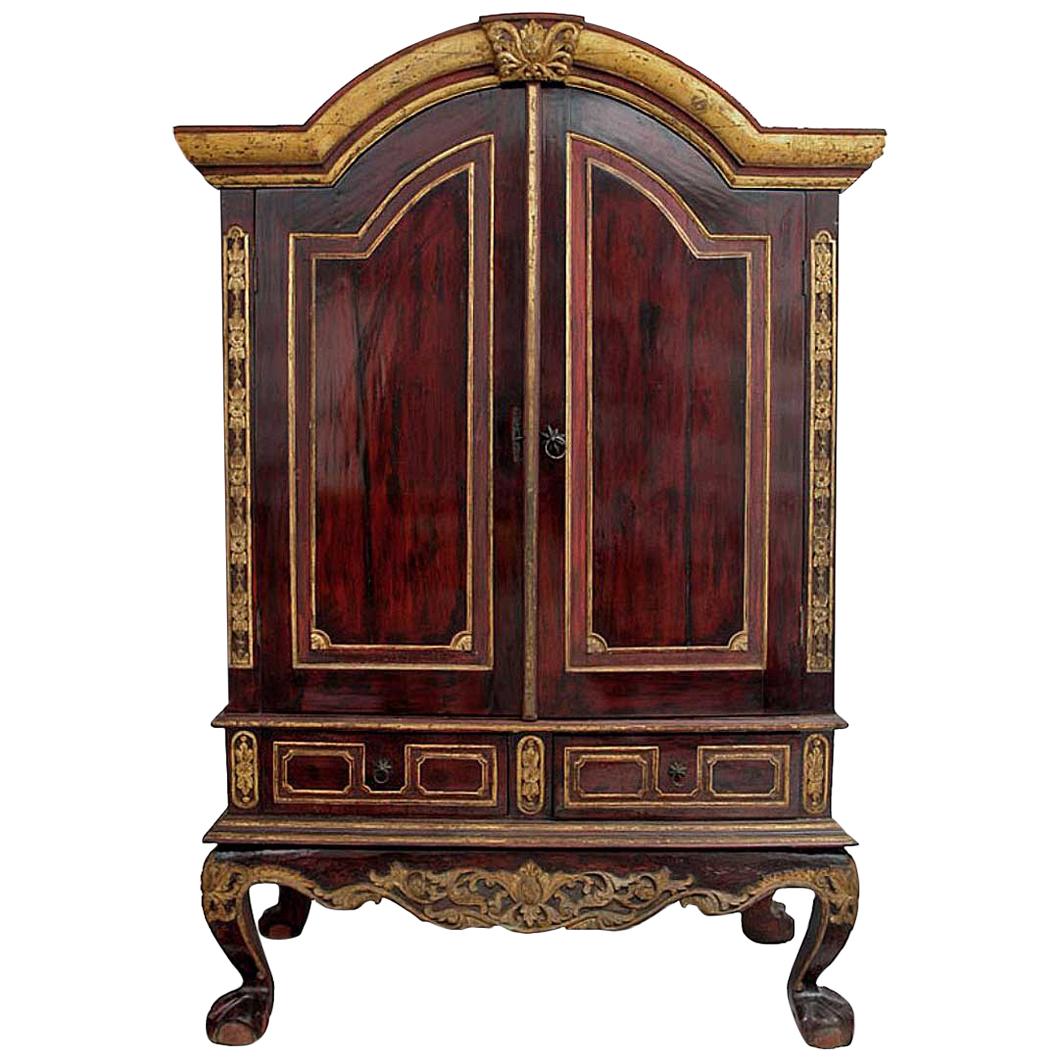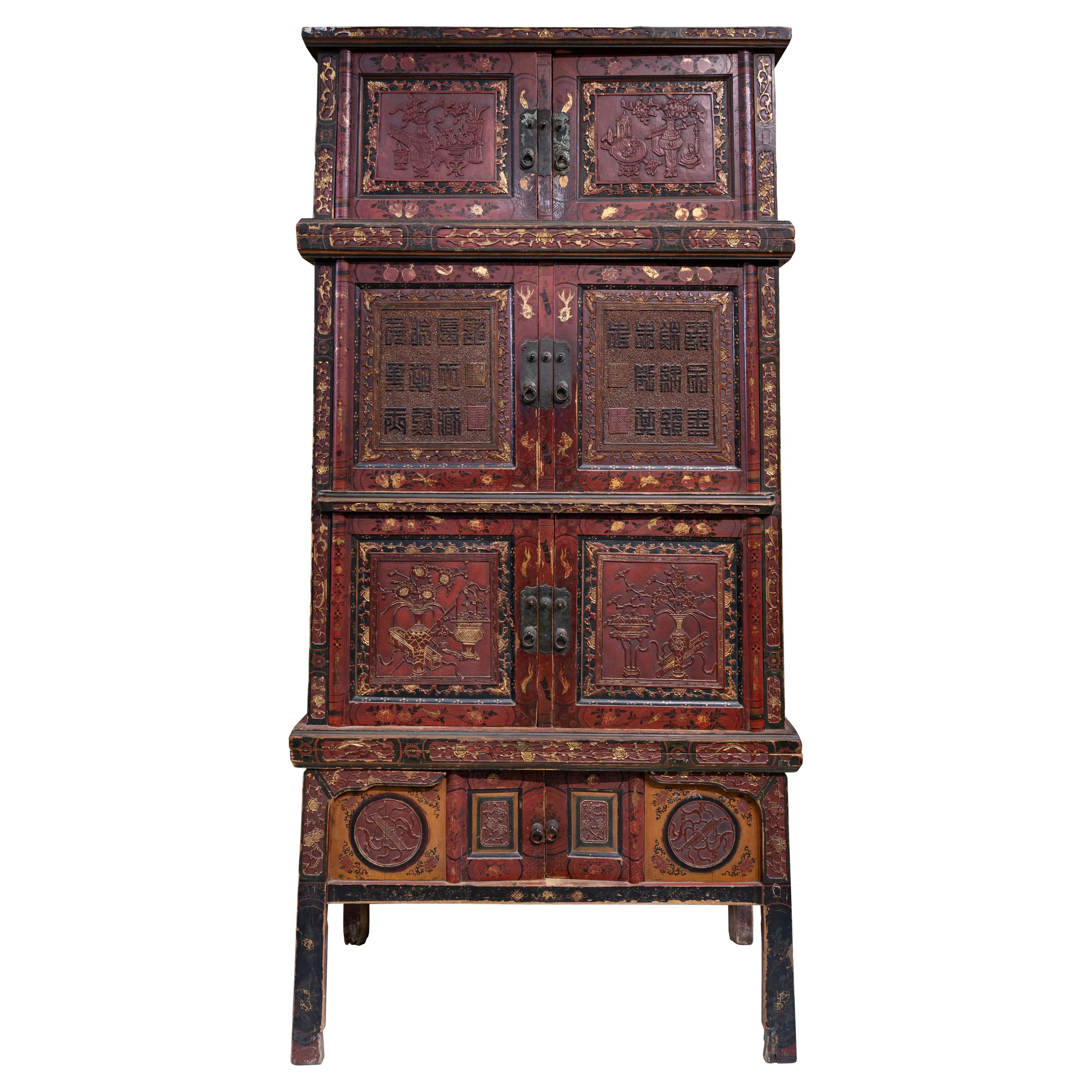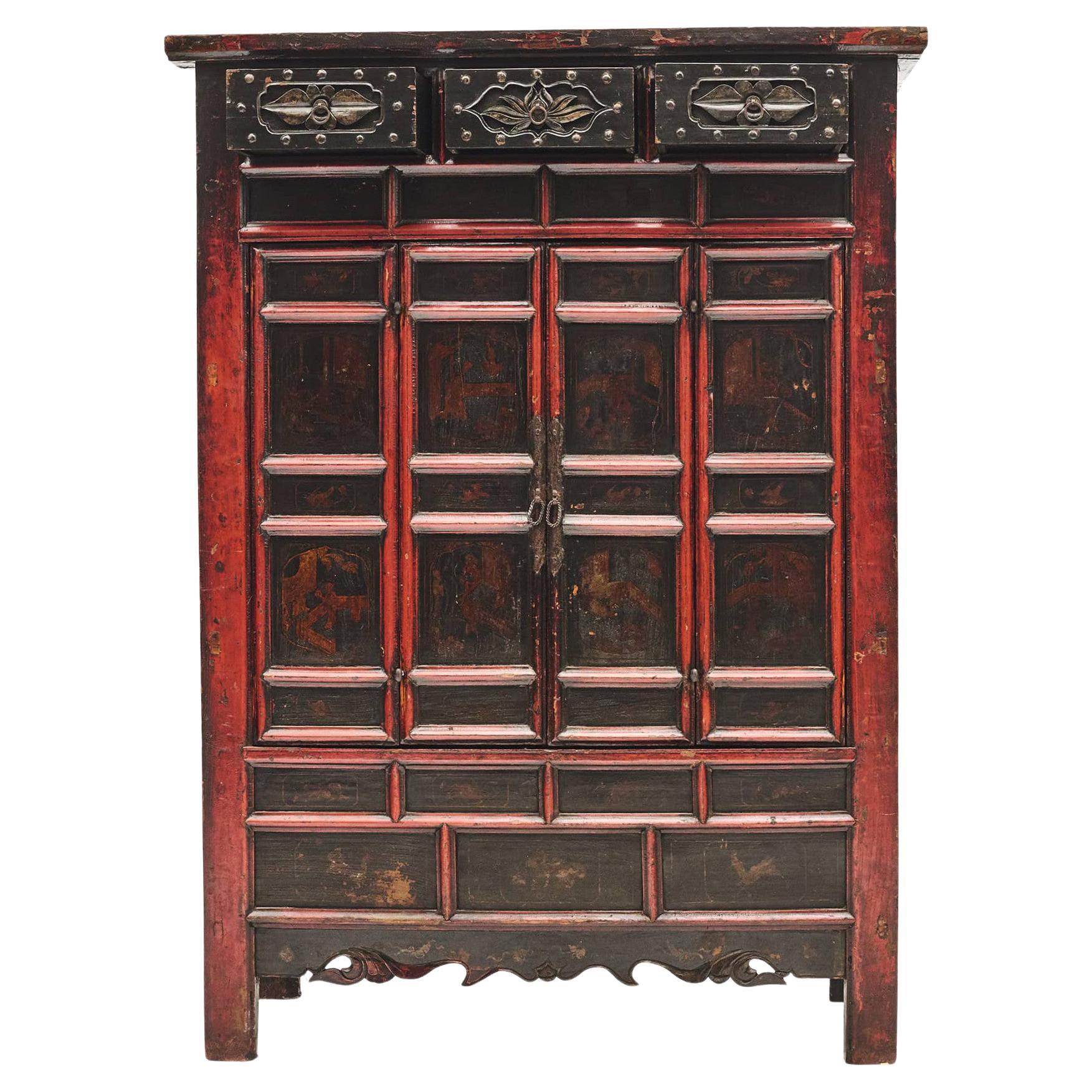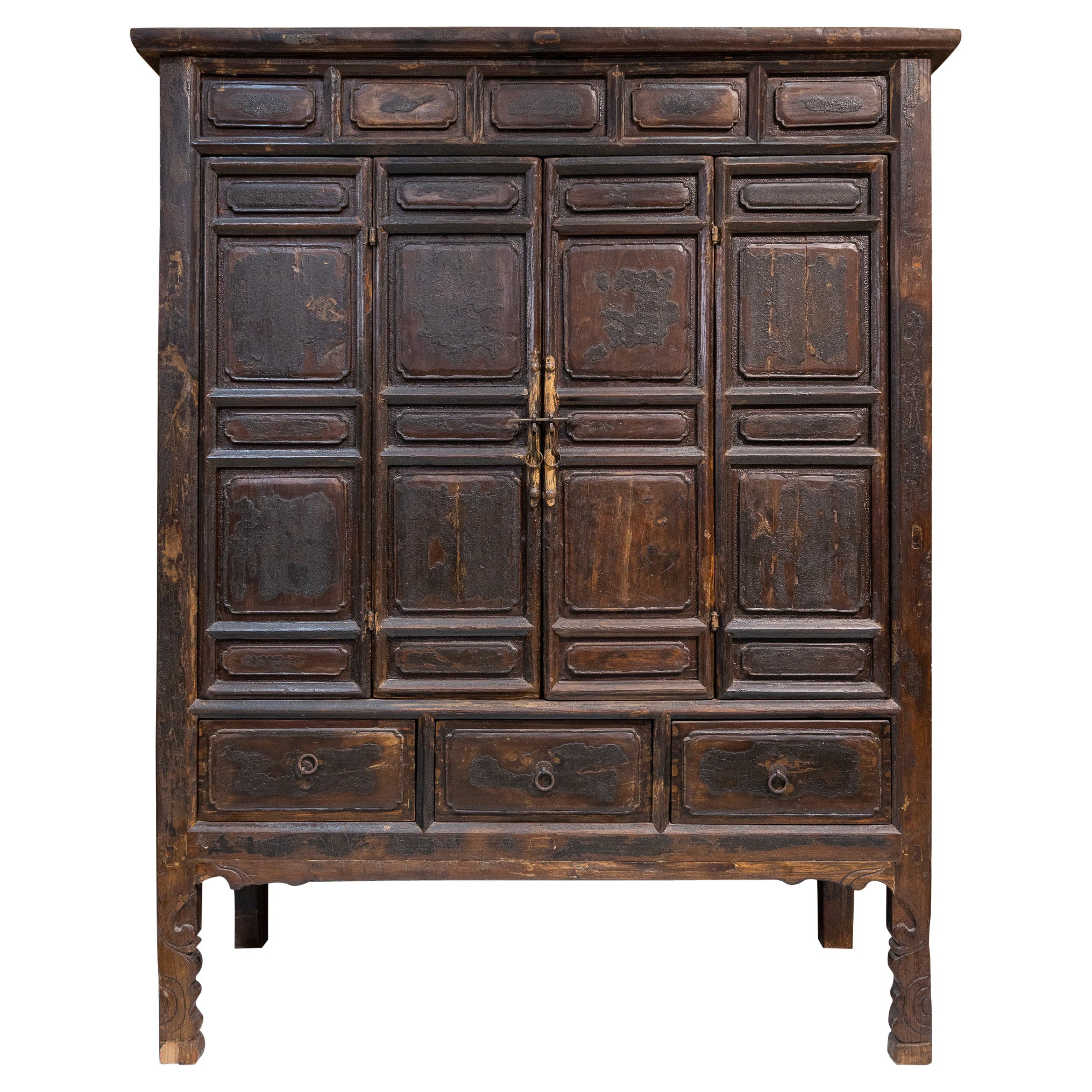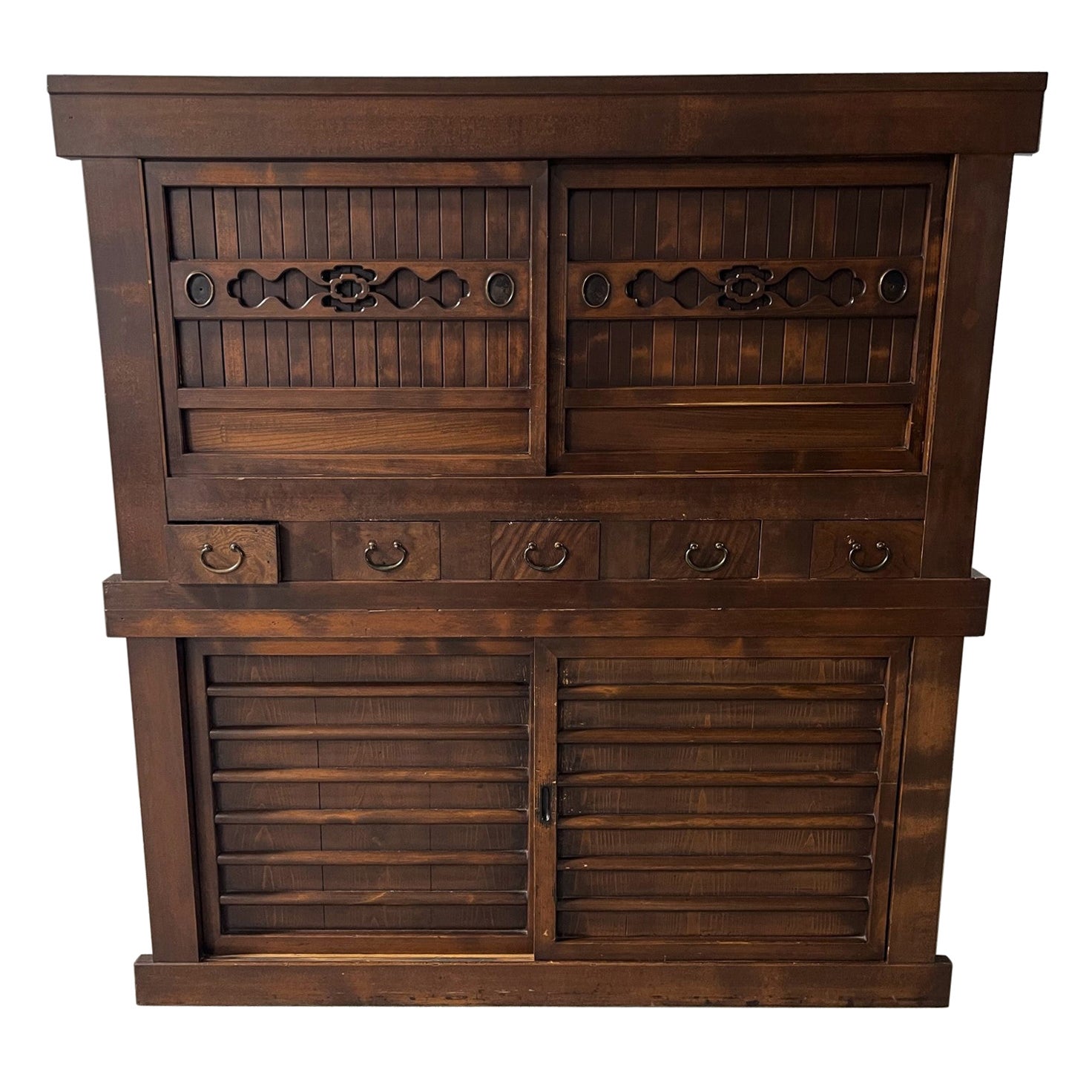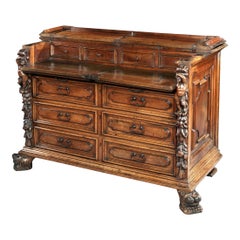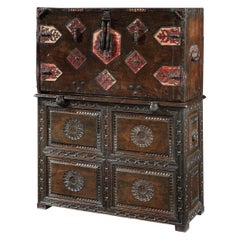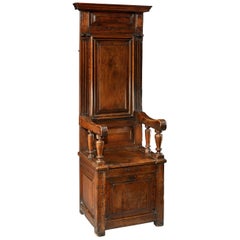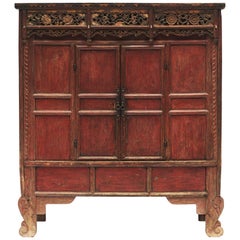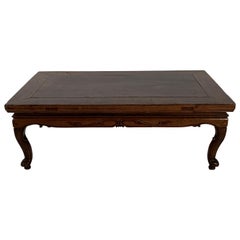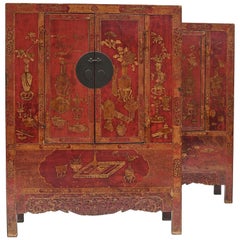
Vargueno or Bargueno, Late-16th-Early-17th Century, Spanish Renaissance, Walnut
View Similar Items
Want more images or videos?
Request additional images or videos from the seller
1 of 12
Vargueno or Bargueno, Late-16th-Early-17th Century, Spanish Renaissance, Walnut
About the Item
- Dimensions:Height: 57.49 in (146 cm)Width: 40.95 in (104 cm)Depth: 24.02 in (61 cm)
- Style:Renaissance (Of the Period)
- Materials and Techniques:
- Place of Origin:
- Period:
- Date of Manufacture:1580-1620
- Condition:
- Seller Location:BUNGAY, GB
- Reference Number:1stDibs: LU3867315796672
About the Seller
5.0
Vetted Seller
These experienced sellers undergo a comprehensive evaluation by our team of in-house experts.
Established in 1985
1stDibs seller since 2018
84 sales on 1stDibs
Typical response time: 10 hours
More From This SellerView All
- Cassettone or Bureau-Chest, Late 16th Century, Italian Renaissance, WalnutLocated in BUNGAY, SUFFOLKExceptional museum quality, Italian, renaissance walnut cassettone with fitted bureau in the upper part & exceptional Bambocci carving, Lombardy. This magnificent cassettone exudes the character and quality of the finest, late-Renaissance furniture. Late 16th century, Northern Italian furniture often had the sides, legs or angles, 'a Bambocci', incorporating carved figures which were unique sculptures in their own right. The putti on this cassettone are beautifully carved and of sculptural quality. Each angel has one arm raised to heaven, a poignant touch. Showing customary signs of wear from time, the lion’s paw feet make a great statement. This cassettone was conceived to have visual impact through the quality of the carving, as well as being very practical with the writing compartment fitted in the top part. It has survived in very original condition with a few small repairs and losses, and the color and patina are warm and lustrous. This cassettone was illustrated in one of the seminal works on Lombardy furniture in the 1969 and has been in two renowned collections. The hinged top in two sections faced with a solid moulded edge. The front part has a fall front and opens to reveal a writing compartment. The fall front retains its original lock and is concealed with a false drawer which is above three drawers. All with moulded panels, escutcheons and retaining the original iron handles. The front ends have exceptional, bambocci, carved putti raising their arms to heaven above trailing foliage. Standing on magnificent lion...Category
Antique 16th Century Italian Baroque Furniture
MaterialsWalnut
- Vargueno, Bargueno, Escritorio, Taquillon, Spanish, Baroque, Walnut, VelvetLocated in BUNGAY, SUFFOLKSpanish writing desks of this period are the most distinctive pieces of Spanish furniture conceived as visual displays of incredible virtuosity. The characteristic decoration of the ...Category
Antique Early 17th Century Spanish Baroque Cabinets
MaterialsWalnut
- Cathedra or Throne Chair, Late 16th Century, French Second Renaissance, WalnutLocated in BUNGAY, SUFFOLKA moulded cornice sits above the high, panelled back with fluting and applied roundels. The later, metal pin on the left edge releases the central, moulded panel in the back which retains its original hinges. When the pin is removed the panel can be lowered, revealing a large area behind. The scroll arms are supported by tapering turnings which can be compared with mid-16th century benches of the nave such as those in the churches in Gerberoy and Coivrel which are in Oise, the Piccardie region of Frances. The panelled, box seat has later 18th century hinges...Category
Antique 16th Century French Renaissance Armchairs
MaterialsWalnut
- Pair of Walnut Armchairs, Late 16th Century, French Renaissance, with Ram Mask CLocated in BUNGAY, SUFFOLK"This rare pair of upholstered open armchairs relate to examples in museum collections in France, the USA and the UK. Few pieces of Renaissance furniture featuring ram’s head motif arm terminals survive as the chairs would have been in the ownership of the elite symbolising leadership and authority. The condition of these armchairs reflects their age and use and they have a rich colour and lustrous patina. The form of these chairs is characteristic of a stereotypical Renaissance model. The upholstered section of the backs are upholstered in wool with applied 17th century floral needlework faced with gilded studs and supported by square section uprights. The channelled tablet and stylised rosette incised curved arms terminate in acanthus capped carved rams' masks and are supported by column turned uprights headed by an entrelac collar. The ram is a symbol of leadership and authority and it also determination, action, initiative, and Aries, the first sign of the Zodiac. The seats are upholstered in wool with applied 17th century needlework faced with gilded studs and supported by tapering column/ring turned front legs and square section back legs. Some of the stretchers with moulded detailing. Standing on front ball feet. Exceptional original colour and patina. Henri II 1550-60. Condition: The chairs are both sturdy with exceptional colour and patina. One armchair with a splice on the rhs back leg and replaced but period front and lhs stretcher both bearing old nail marks, two other replaced stretchers and the back uprights bearing old nail marks indicating that they were upholstered at some point. The other armchair with an old repair to a break in the right back leg and an old patch near the end of the leg, replaced but period back and lhs stretcher, small patch to bottom of lhs arm where it meets the support. Old worm marks and some losses. Considering the age of the armchairs, these repairs and replacements are not unusual and consistent with the repairs on the related armchairs in museum collections. They suggest that the chairs either fell backwards at some point or someone leant back while sitting in them. Back Height 107cm, 42in, Seat Height 59.5cm, 23½in Width 60cm, 23½ in, Seat 59cm, 23¼in Depth including arm 59cm, 23¼in, Seat 49cm, 19¼in Provenance: Deaccessioned by The National Galleries of Scotland Bearing an old transport label from Alain Moatti (French architect) to Mrs Katz, London Literature: Related to : There are comparable armchairs in international museum collections dated to the second half of the 16th century. Most share the following characteristics with the above pair, the form, the ram's mask carved to the end of each arm, the curvilinear outline of the arm rests, the ring turned front legs as well as the plain square section back legs and plain stretchers. 1. Two stained glass windows...Category
Antique 16th Century French Renaissance Armchairs
MaterialsWalnut
- Cassone, 17th Century, Italian, Baroque, Vernacular, Walnut, Carved, HeartsLocated in BUNGAY, SUFFOLKThis handsome cassone has ornament with romantic associations and was most likely a marriage chest. It is a good example of the Italian vernacular, simple in a sophisticated manner. ...Category
Antique Late 17th Century Italian Baroque Blanket Chests
MaterialsWalnut
- Table, Drawleaf, 18-Seat, 16th Century, Italian, Renaissance, Walnut, IronLocated in BUNGAY, SUFFOLKThis massive 18-seat table has many features which are typical of drawleaf tables that were made in the last quarter of the 16th century. Early continental drawleaf tables rarely com...Category
Antique 16th Century Italian Renaissance Dining Room Tables
MaterialsWalnut
You May Also Like
- Antique 15th-16th Century Ming Dynasty CabinetLocated in Kastrup, DKRare and well-preserved 16th century cupboard / cabinet. Detailed carved top section depicting a floral leaf design and people in polychrome lacquer. Front with red lacquer, pair o...Category
Antique 16th Century Chinese Ming Cabinets
MaterialsElm
- Chinese Early Qing Dynasty Walnut Folding Table, 17th-18th Century, ChinaLocated in Austin, TXA very fine and rare Chinese Qing Dynasty walnut wood (hetao mu) kang table with folding legs, 17th to 18th century, China. Crafted in walnut wood (hetao mu), this ingenious table...Category
Antique Early 18th Century Chinese Qing Furniture
MaterialsWalnut
- Pair of Late 18th Century Chinese CabinetsLocated in Kastrup, DKA rare set of cabinets. Red lacquer with original carvings and well-preserved leaf gold decorations. Black lacquer on the sides of the cabinet. A decorative and beautiful pair of cab...Category
Antique Late 18th Century Chinese Qing Cabinets
MaterialsBrass
$16,340 / set - Early 20th Century Dutch Colonial CabinetLocated in New York, NYA large polychromed wood cabinet with two doors and shelves from Central Java, Indonesia, early 20th Century. Hand-carved accents, original hardware. Dimensions: 59" wide, 28" deep...Category
Vintage 1920s Javanese Dutch Colonial Cabinets
MaterialsWood
$20,800 Sale Price20% Off - Late 19th Century 3-tier Cabinet from Fujian, ChinaLocated in Singapore, SGA late 19th century carved cabinet from Longyan city, Fujian province, China. The name Longyan (??) literally translates into "Dragon's rock". This 3-tier carved cabinet has beautifu...Category
Antique Late 19th Century Chinese Qing Furniture
MaterialsFir, Pine
- Late 18th Century Decorated Cabinet from Shanxi, ChinaLocated in Kastrup, DKLate 18th century cabinet from Shanxi, China. Original red and black lacquer with a light clear surface finish, which highlights the lovely natural patina. Pair of bi-fold doors wi...Category
Antique Late 18th Century Chinese Qing Cabinets
MaterialsIron
Recently Viewed
View AllMore Ways To Browse
White Fretwork
Traveling Bar Box
Bone Carved Asian
Walnut And Black Hide
Asian Chest On Stand
17th Century Spanish Chest
Spanish Chest 17th Century
Hasp Lock
17th Century Shell Carved Furniture
Spanish Vargueno
Writing Box On Stand
Antique Drop Pull Handles
Shell Display Box
Large Modern Metal Door Handles
Pair Of Empire Chests
Spanish Double Doors
Used Furniture Fall River
Lion Bone


